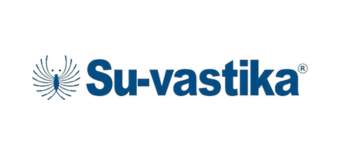The Future of Inverter/UPS: AI-based Su-vastika Systems
The Future of Inverter/UPS: AI-based Su-vastika Systems
Su-vastika is at the forefront of inverter/UPS and Energy Storage Systems with Lithium-ion battery technology in India, especially with AI-based systems. These systems are called energy storage systems or battery energy storage systems, which work on solar panels and without solar panels. Here’s a breakdown of the key points:
Su-vastika’s AI Inverter/UPS:
- Developed by Su-vastika, an Indian startup founded by Khushboo Sachdev and Mr. Kunwer Sachdev, founder of Su-kam, known as the “Inverter Man of India.”
- It uses artificial intelligence to manage Lithium-ion batteries, and the complete controls of Inverter/UPS can be seen and controlled through the computer, which can be connected through the USB port in all the products made by Su-vastika.
- Continuously monitors parameters like voltage, charging current, discharging current, charging percentage, load percentage, battery charged and discharged percentage, solar parameters, etc., which can be seen on the computer in real-time.
- If you see the below screen on can see the parameters to select to show on the mains screen of Inverter/UPS tester and the right-hand side is for calibration of various parameters which can be calibrated as per the need of the installer. As when the parameter values are being monitored and if there is any variation of values then this calibration can help the user to calibrate the system as per his own needs.

Computer-based testing software.
- Setting Parameters can be done through computer software like the charging current, Low battery setting, Battery Reserve settings, Battery type selection, Wide and UPS mode selection, all kinds of Solar parameter settings, etc. https://suvastika.com/first-ai-based-inverter-ups-made-in-india/
- Alerts such as Overload, Short circuit, Low battery, High battery shutdown, Solar current, and high shutdown, front switch status, High temperature shut down, Back feed fault mains MCB trip are monitored and stored in the computer.

- It is controlled through a computer with Su-vastika’s proprietary software.
- Digital Warranty can be seen through the computer and updated through the software developed by Su-vastika.
- Certain parameters are essential to check when the Inverter/UPS is installed, like Battery High Shutdown, Low Battery Voltage setting, Charging Current setting, High Solar Current setting, etc., which are essential to check before an installer installs the product so that if the setting is wrong, there may be a problem in the system balancing.

- Technology Patents have been filed on this software by Su-vastika in India.
- The Inverter/UPS software updates can be uploaded directly and remotely through this computer software.

The Future of Inverter/UPS: AI-based Su-vastika Systems
Potential Benefits:
- Improved Efficiency: AI can optimize power usage, potentially reducing energy consumption.
- Updates as all the Energy Storage System Software are updated regularly, so software upgrades can be done quickly through remote programming.
- Digital Warranty is a major problem solver as the reseller, or the customer does not need to keep any records to avail themselves of the product’s warranty.
- Major Settings through computer software solve the significant challenge of physical switches, which are very complicated to handle. As for computer settings, it’s very easy to make the various settings.
- Ease of Operations: The AI-based Inverter/UPS or ESS can be maintained and easily programmable for different settings.
- Enhanced Reliability: By proactively monitoring for issues, the system can take corrective actions to prevent outages.
- Extended Lifespan: AI may adjust settings to minimize wear and tear on the inverter and battery, extending their lifespan.
The Future of Inverter/UPS: AI-based Su-vastika Systems
Overall, Su-vastika’s AI-based inverter/UPS is a promising innovation in the power backup industry. It would be interesting to see how this technology evolves and what other features it might offer in the future.

 Su-vastika
Su-vastika

 Su-vastika
Su-vastika
Leave a Reply
Want to join the discussion?Feel free to contribute!